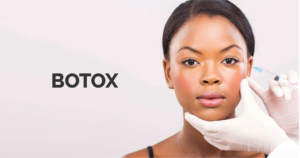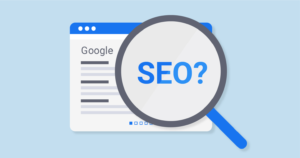San Diego Botox smoothes fine lines and wrinkles by temporarily blocking nerve signals to targeted facial muscles. It is also used to treat other conditions, such as a migraine headache or excessive sweating.
Botox injections are usually performed in the office of an experienced cosmetic dermatologist, such as Dr. Michele Green. She will review your medical and cosmetic history and take several photographs of your face.

Neurotoxin injectables work by blocking nerve signals to muscles in the area where they are injected. This makes the muscle relax, which smooths fine lines and wrinkles that appear when your face is in certain expressions, such as smiling or frowning. Botox is one of the most popular injectable neurotoxins, but it isn’t the only option. Dysport and Jeuveau (also known as Newtox) are two other options that have FDA approval to reduce the appearance of fine lines and wrinkles caused by facial movement.
The injectables all contain the same active ingredient, botulinum toxin type A. The differences between them lie in their formulation, which can affect how quickly a patient sees results and how long those effects last.
A bacterium called Clostridium botulinum produces the toxin that medical professionals use for injections. If enough of the bacteria gets into a wound or swallowed, it can cause botulism, a serious nervous system disorder that affects breathing. However, when used by trained and licensed healthcare providers, the toxin is safe and has been approved by the FDA to treat several medical conditions, including muscle spasms and eyelid tics.
Before getting botox, be sure to look for an experienced cosmetic surgeon who has extensive training and substantial experience administering neurotoxin injections. The surgeon should be a board certified plastic surgeon. If you’re planning to get botox from a nurse or physician assistant, ask to see before-and-after photos of the provider’s patients.
Injections of botulinum toxin block chemical signals from nerves that would normally cause the muscles to contract. The most common uses of botox are to reduce the appearance of frown lines and other wrinkles around the eyes, forehead, and mouth. The injections also can help ease neck spasms and alleviate a condition known as cervical dystonia, a painful muscle spasm that can pull the head into an unnatural position.
The injections are quick and simple, with minimal downtime. The most common side effects are mild redness and swelling at the injection site. The effects of botox usually take about 24 hours to begin taking effect, and then the results can last up to three months or more.
After your first round of injections, you can return to your normal routine. Your cosmetic surgeon may ask you to avoid rubbing your face or exercise while waiting for the effects of the treatment to wear off. It is also important to not be exposed to sunlight or laser treatments before and after your injections, since they can interfere with the effectiveness of the procedure.
Xeomin and Botox are both prescription injectable neuromodulators that can be used to reduce the appearance of fine lines and wrinkles. They work by blocking the nerve signals that cause muscles to contract. While these products are similar, they have some differences that may make one more suitable for your needs.
Both Xeomin and Botox contain the same active ingredient, botulinum toxin type A. This is a byproduct of the bacterium Clostridium botulinum and is safe in small, controlled doses. The difference between Xeomin and Botox is in how they are prepared. Xeomin is made from a pure preparation of botulinum toxin type A, while Botox contains additional proteins and additives that can trigger allergies. Xeomin is also known as a “naked” injectable because it doesn’t contain additives, which can lead to fewer side effects.
While Xeomin and Botox have many similarities, it is important to consult a medical professional before deciding which product is best for you. The injection procedure is very simple, and the results are quick and long-lasting. Patients should not touch their face for about three hours after treatment to ensure the Xeomin stays in place. Patients should schedule follow-up sessions as needed to maintain the results.
When it comes to choosing a provider for your Xeomin treatment, look for a medical doctor or nurse practitioner who is experienced with the injection process. Your practitioner will use an ice pack to numb the area around the treatment site before injecting the Xeomin into the skin. Depending on your skin type, you may experience bruising or redness after the injection.
Xeomin is a great choice for people who want to look younger without surgery. It works by temporarily blocking the nerve signals that cause facial muscles to contract. The effects last up to three months, after which they begin to wear off. It is recommended that you have regular Xeomin treatments to keep your wrinkles at bay.
Xeomin is also available under the brand name Dysport. This product has the same ingredient as Xeomin, and its injections are typically used for similar cosmetic and medical purposes. Some health insurers cover the cost of Dysport for medical conditions like migraines or urinary incontinence. However, it is not covered by insurance for cosmetic procedures.
Although both Botox and Xeomin use the same active ingredient, botulinum toxin type A, they are not the same. In fact, a dermatologist will recommend one over the other for your specific needs and aesthetic goals. For example, Xeomin may be better for patients who are looking to target fine lines and wrinkles in the upper forehead. It can also treat glabellar lines, the vertical lines that appear between the eyebrows. Both products can be effective and start working within a week. They typically last between 3 and 6 months before you will need to get a follow-up treatment.
Both Xeomin and Botox work by blocking the nerves’ messages to the muscles to prevent them from contracting. This causes the muscles to relax, thereby reducing the appearance of fine lines and wrinkles. Both treatments are very safe and do not require recovery or downtime. During your appointment, the injection sites will be cleaned to minimize the risk of infection. It is important to avoid massaging the area after the treatment. It could spread the neurotoxin to other areas and cause undesirable side effects.
The main difference between Xeomin and Botox is that Xeomin does not contain any additive proteins, whereas the former does. This means that your body won’t build up antibodies against Xeomin, and it should help the toxin reach its targeted areas faster. As a result, the results of Xeomin should begin to take effect sooner and last longer than the results of Botox.
Moreover, Xeomin is a purified form of botulinum toxin type A, so it should be less likely to cause an allergic reaction. However, you should still speak with your doctor about any allergies or sensitivities that you have.
Another benefit of Xeomin is that it usually costs less than Botox, at least at some clinics and medical spas. This is because Xeomin does not require refrigeration and is considered to be a “naked” injectable. It has also been found to have a shorter duration of action, but it is not yet clear whether this is due to the lack of added proteins or the injection method.
Unlike Botox, which treats several facial areas, Xeomin is FDA-approved to treat frown lines alone. It is injected into the brow line in small amounts and can take just minutes to complete. Although it is not recommended to get Xeomin for multiple facial areas, it can be a great option for patients who have a single stubborn wrinkle or for those who do not want to undergo a surgical procedure. Xeomin also has the added benefit of being safer to use than Botox, since it does not require refrigeration and does not have any additional proteins. It may also be a better option for people who have skin sensitivity issues, as it does not contain any preservatives.

